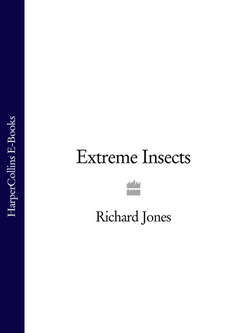Читать книгу Extreme Insects - Richard Jones - Страница 21
Longest ovipositor (egg-laying tube)
Оглавление| NAME | sabre ichneumon in the genus Rhyssa |
| LOCATION | Europe, North Africa, Asia, North America |
| ATTRIBUTE | hypodermic-like egg-laying tube longer than the rest of its body |
Ichneumons are related to wasps, but instead of building nests for their larvae, they choose a more insidious lifestyle for their young. Ichneumons lay their eggs in the bodies of other insects, usually moth and butterfly caterpillars, but also insect eggs or pupae. The hatching maggot then eats the host animal alive, from the inside, eventually killing it. An organism that lives on or in a host and kills it in this way is known as a parasitoid.
Together with the many other parasitic ‘wasps’, ichneumons are a large and diverse group of creatures, which target a huge range of insect hosts. At one end of the scale are some of the smallest insects known (see page 90); at the other end are the giant ichneumon or sabre wasps in the genus Rhyssa.
Giant ichneumons need a host animal of suitable size to feed their equally giant larvae, and choose the larvae of another group of very large insects – the horntails. Horntails (Syrex species) are huge hornet-sized insects, named after their own large, stout tails, which they use to saw into fallen logs and rotten tree trunks to deposit their eggs. Their large grubs will chew burrows through the dead wood for between one and three years before finally emerging as adults.
Rhyssa females are able to detect chemicals given off by the Syrex larva, even through 4 cm (1 ½ in) of wood. The narrow 4 cm tail of a sabre wasp, usually longer than the rest of her body, is composed of three pieces – two thick outer strips form a protective sheath that covers the needle-thin ovipositor (egg-laying tube). Using her long legs and flexible abdomen as a gantry, she slowly pushes the slim egg tube down through the timber until she is able to parasitise the grub below. Her offspring is now assured of food to see it through to adulthood, but the horntail maggot is doomed.
